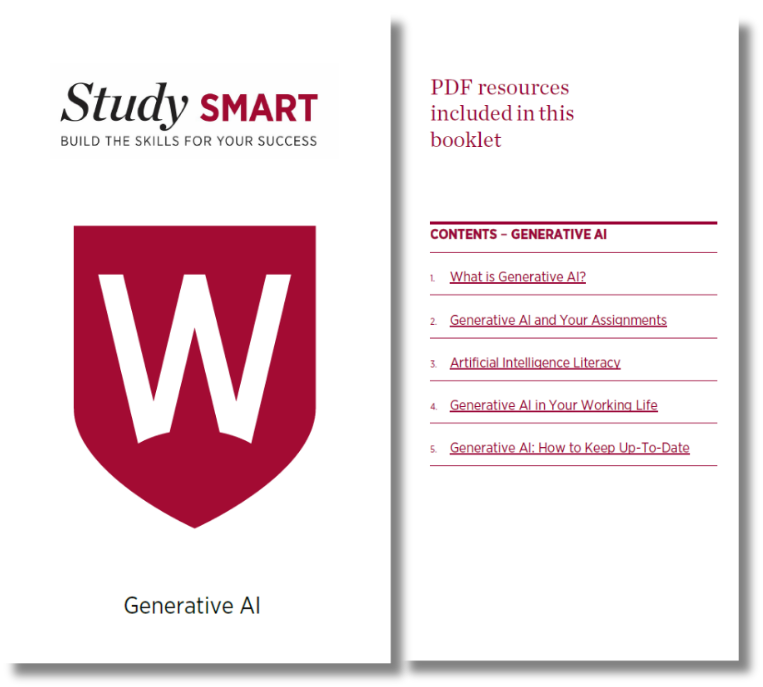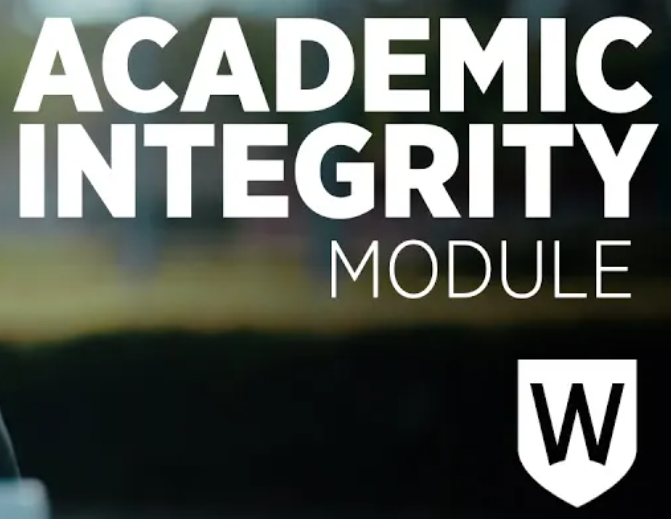Generative AI
✍️ Events and Workshops
🛠️Tools and Guides on Generative AI
🎥 2 Minute Videos on Generative AI
We've made these videos to help you get up to speed with using generative AI appropriately and how to follow the Western guidelines.
Using Generative AI: Prompting Basics
Feeling stuck on how to get started with generative AI tools? This video explains some basic principles that can help you use generative AI tools more effectively.
The most effective uses of generative AI tools are when you put the effort into learning:
- Your problem formulation: why do you need to use generative AI? This requires some creativity and experimentation on your part.
- The limits of generative AI tools and where your human insight is needed.
- Your context: is this an appropriate situation to use generative AI?
University-Endorsed Generative AI Tools
This video explores our two university-endorsed generative AI tools: Microsoft Co-Pilot and Adobe.
Evaluating Generative AI
Generative AI tools can produce invented, inaccurate, outdated, not relevant, or biased content. Do you have the skills to critically evaluate generative AI content?
Western’s Approach to Generative AI
We’ve summarised Western’s guidelines on generative AI in this video. If you want more guidance in this space, check out our Generative AI Module.
⚠️ Generative AI at Western - What you need to know
Read the following information below on how you can appropriately use generative AI at Western.
Where can I find the most up-to-date info about Academic Integrity and Generative AI at Western?
If you have just started out at Western, complete the Academic Integrity Module (AIM) as soon as possible. This module will help you understand the importance of academic integrity in the university context and has a section on generative AI.
Otherwise, check out our Generative AI Module here. This module is based on the AIM but also provides more detail on generative AI that is useful for your studies and future career.
Western Sydney University encourages the appropriate use of generative AI. In some subjects, you may be asked to use generative AI as a tool, but it is restricted in some subjects and some assessment tasks.
Can I use Generative AI in my assessments?
Generative AI guidelines will be different for each assessment task. Read the generative AI statements in your Subject Outline for each new assessment task, check information on vUWS or check with your Subject Coordinator. Do not assume the advice is the same for every task, or every subject. It is your responsibility to read your Subject Outlines and check information on vUWS.
Check out our Generative AI Guide for example statements from Subject Outlines.
If you are using generative AI, make sure you are acknowledging it. This Library webpage explains how.
What AI tools do I have access to at Western Sydney University?
Where the use of generative AI is permitted, the following tools are available to students:
1. Microsoft Co-Pilot: open the Microsoft Edge Browser and go to https://copilot.microsoft.com/
Signing in with your student or staff ID enables commercial data protection. This means that your data may safer compared to other generative AI models. Even with commercial data protection, you should be careful to avoid entering personal informational or anything confidential.
Contact the IT Service Desk if you are having trouble logging in or try this alternative link instead: https://www.bing.com/chat
2. Adobe Firefly: Western Sydney University is NSW’s first Adobe Creative Campus meaning we have access to an amazing suite of Adobe tools. Adobe Firefly uses everyday language to create images with generative AI. Find out how to access Adobe Firefly at Western Sydney University here.
What is the Turnitin AI Detector? Why can’t I see it?
AI detection reports help staff to identify when AI writing tools maybe have been used. These reports are not available to students. This is a decision made by Turnitin and cannot be altered by the university.
Avoid using any online tools for AI Detection. These tools are not reliable and may put you at risk.
If you provide your details to access one of these tools you may be at risk of identity theft. If this happens to you, the University will support you. Contact Wellbeing Services on 1300 668 370 (option 5).
What if I haven’t used generative AI but my assignment is flagged in Turnitin for AI use?
You may be asked to explain what you have written in your assessment or provide notes or an early draft of your assessment. On its own, this request is not an allegation of misconduct.
When am I supposed to reference generative AI text or images?
Check the ‘Referencing/Acknowledging generative AI ’ section of the generative AI module for current advice on acknowledging generative AI.
How can I use generative AI in my research?
Check out the Library Guide on AI Tools in Academic Research for the range of databases available to you with generative AI features.
Is Grammarly considered generative AI?
Grammarly has recently updated the free version of Grammarly. The free version of Grammarly now contains generative AI features. So where generative AI use is restricted in your subjects, tools to assist with spelling and grammar can be used only where these do not use generative AI. Learn how to turn off generative AI features in Grammarly here.
Can I use Quillbot to paraphrase text I find online?
In short, the answer is no. In your assessments, you need to make sure you're learning and paraphrasing in your own words. Check Study Smart How-To Guides for Paraphrasing. Using AI to paraphrase text from an article and then pasting that paraphrased text in your assignment is NOT original or appropriate.
Can I use generative AI to translate my work into English?
Unless given permission, in short, the answer is no. Relying on generative AI for translation into English negatively impacts on the learning process. Generative AI does not understand cultural and subject-specific nuances in writing, so you will find that the translations are not accurate and will negatively impact your work.
How can I improve my knowledge of generative AI models so it will benefit me in my future career?
Our Study Smart Generative AI Guide gives you some ideas!
In short:
1. Learn by doing: take a trial-and-error approach to using generative AI tools.
2. Make sure you’re on LinkedIn: as a Western Sydney University student, you have access to LinkedIn Learning with a vast array of short videos to listen to.
3. Complete a self-paced course: many organisations like Google and Adobe provide short and free courses you can complete online to quickly upskill.
4. Read and be creative: think about the ‘human’ qualities you bring – this is how you stay relevant in a world with rapid technological change.
Who can I talk to if I’m confused about the university’s approach to generative AI?
If you are confused about generative AI, always ask your Subject Coordinator or Tutor for advice, don’t just guess what you should be doing.
If you want to gain further skills in using generative AI, want to think more critically about generative AI, or need help with your referencing and writing capabilities, check out the Library’s workshops. Attending workshops is a great opportunity to gain new skills and make friends.
You can also receive one-to-one support from the Online Librarian team (for quick queries you may have) or receive one-to-one specialist advice with your research strategies and referencing from a Study Smart Librarian.
📖 Generative AI Guide
Want a quick guide on how generative AI works at Western and how you can use it for future career success?
Download the PDF below so you're prepared for how generative AI can impact your studies. Topic-by-topic PDFs can be accessed at How-To Guides.
Mobile options:

















